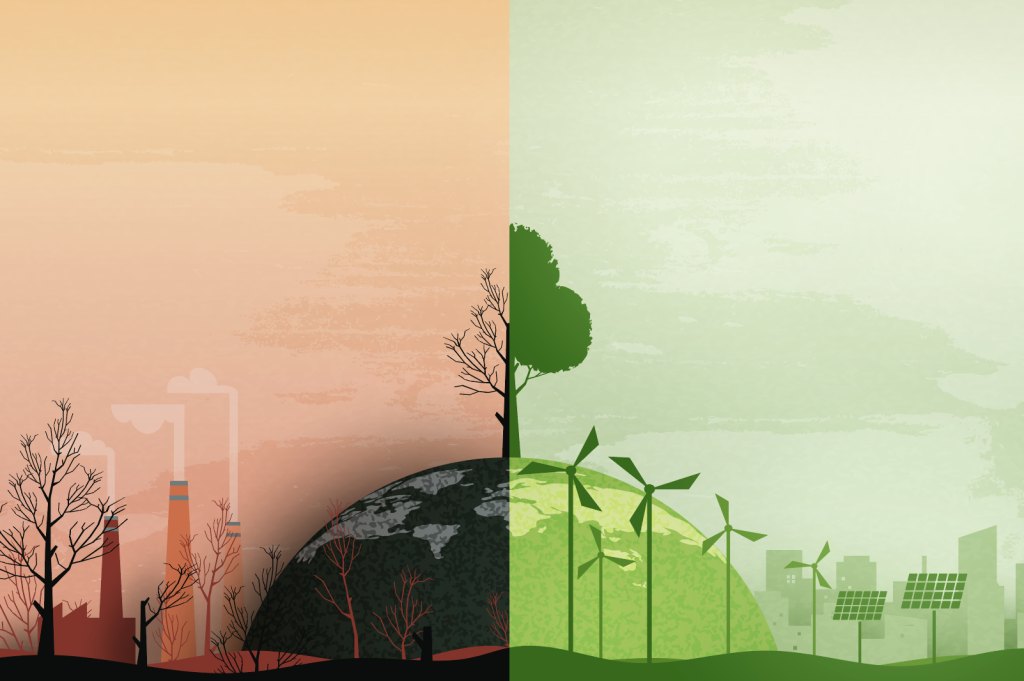 We live in an era of continuous and expanding growth: Producing, procuring, distributing, trading, consuming, and other economic activities improve people’s quality of life, upgrade communities, and allow nations to thrive. However, says Oumaima Ben Amor, Sustainability Consultant at Our Hiraya in Australia, we tend to forget that the economy and society are embedded into the biosphere. Businesses cannot operate and thrive without a healthy biosphere.
We live in an era of continuous and expanding growth: Producing, procuring, distributing, trading, consuming, and other economic activities improve people’s quality of life, upgrade communities, and allow nations to thrive. However, says Oumaima Ben Amor, Sustainability Consultant at Our Hiraya in Australia, we tend to forget that the economy and society are embedded into the biosphere. Businesses cannot operate and thrive without a healthy biosphere.
According to the World Meteorological Organisation, the number of natural disasters has increased by a factor of five over a five-year period. These disasters and extreme weather events do not happen without a cost. They cause physical and transitional risks for businesses, which can end up in huge financial losses if not dealt with properly. Sustainability creates an economic and environmental balance, by which businesses develop continuously. Business owners should be aware of climate-related risks and understand the role of sustainability in mitigating them and creating opportunities.
Climate-Related Risks
This section is an overview of potential climate change impacts on businesses. These projections were inspired by a Harvard Business Review article.
PHYSICAL RISKS
More hot days and more frequent heat waves. A global BBC analysis found that the annual number of extremely hot days with temperatures reaching 50°C has doubled since 1980. Heat waves will not only increase energy demand for cooling but also lead to unreliable electricity generation due to the lessened ability of transmission lines to carry power and the reduced efficiency of thermal power plants, as highlighted in an analysis by the International Energy Agency.
In June 2021, a heatwave in US and Canada melted power cables and caused power outages, which forced many businesses to suspend their activities.
Extreme heat is also linked to air stagnation that traps pollution and can cause respiratory diseases such as asthma. The human impacts of air pollution is responsible for huge opportunity costs on businesses due to decreased worker productivity, reduced consumer footfall, and premature mortality.
According to a report by Clear Air Fund, air pollution costs Indian businesses USD 95 billion, which is about 3% of India’s GDP each year.
Given that the agriculture sector is a primary producer of industrial raw materials, heat stress can also impact plant growth, limit yields in desirable crops, strain supply chains and cause financial losses.
More frequent heavy precipitations. The most immediate consequence of heavy precipitations is flooding. A loss of human life and property damage are not the only consequences. Businesses also heavily suffer from flooding impacts.
In July 2021, Germany witnessed deadly floods. In a DW interview with Janine Isken, the owner of Dresel Hotel, she described how the floods destroyed electrical systems, cold storages, heaters, and switch boxes in the hotel. Another business owner suffered huge technological losses due to water flowing through his aluminium rims factory.
Floods, therefore, can cause power outages, assets damage, delayed transport, and disrupted
commercial exchanges. Fixing these damages will require additional costs and cause service delays. While one can rely on insurance, climate-related losses, however,have been exceeding insurers’ capacity.
According to Munich Re,the floods caused Germany losses of up to US$ 54bn (€46bn). Moreover, the flooding caused erosion and soil displacements, which led to field and crop destruction. It also depletes oxygen levels due to the waterlogging of soil.
More areas affected by drought. The most prominent consequence of droughts is water scarcity, a crisis experienced by 2.7 billion people at least one month in every year — not to mention those who completely lack access to water. According to 2017 Our World in Data statistics, approximately 19% of total water withdrawals are used for industrial purposes globally, with Canada accounting for 79%, Germany for more than 80%, and the Netherlands for more than 90%.
Water shortage causes financial losses for businesses due to reduced production, business interruption and relocation, or seeking alternative water resources which might be more costly.
An important link to mention is the water and energy nexus. Water scarcity, for instance, can lead to lower hydropower yields. The Colorado River dilemma highlights this challenge. Water scarcity lowered the power production at the canyon dam, which generates electricity for more than 5.8 million homes and businesses. This also has tremendous impacts on the agriculture sector, which range from land degradation, livestock deaths, lower crop yields, and wildfires.
Rise in sea levels. According to the 2019 Global Risks Report of the World Economic Forum, 800 million people are vulnerable to a sea level rise of 0.5 metres by 2050. Rising sea levels will result in flooded cities, submerged coastal areas, and mass migrations, which will eventually
drive massive economic losses.
A study published in Nature reveals that rising sea levels can cost the global economy $14.2 trillion in lost or damaged assets by the end of the century. A rise in sea level also leads to a loss of agricultural land in these coastal zones, as well as the degeneration of wetlands and marshes. Moreover, a rise in sea level causes saltwater intrusion into freshwater resources such as groundwater basins, thereby reducing crop yields and the availability of safe drinking water.
Worth mentioning are businesses in coastal tourism: Mould growth in buildings disturbs local people’s health and discourages tourists. Rising sea levels also cause beachfront property damage due to erosion, floods, and storms.
Businesses have an important role to understand the social pressures caused by climate change, such as water scarcity, food shortages, and displacements. Agricultural disruptions, for instance, will result in food shortages, a crisis that is expected to aggravate in the upcoming
months — according to the United Nations (UN) Secretary — putting the lives of millions of people at risk from famine.
In addition to this, the United Nations High Commissioner for Refugees (UNHCR) shows that extreme weather events are causing an average of 20 million people to leave their homes and move to other areas of their countries each year. Meanwhile, others are forced to cross borders.
Please see the full White Paper, including chapters on Transition Risks, Turning Physical Risks into Opportunities, Turning Transition Risks into Opportunities, and How Our Hiraya Can Help here.
About the author:
Oumaima Ben Amor is a sustainability consultant at Our Hiraya and an independent scholar at the Ronin Institute. After studying energy, she aspired to expand her knowledge in sustainable development. She believes that the biggest climate change challenges lie within interlinkages. Driven by the latter, she works hard to showcase the climate relevance to business organisations and to provide them with the best recommendations for their sustainability journey.



























